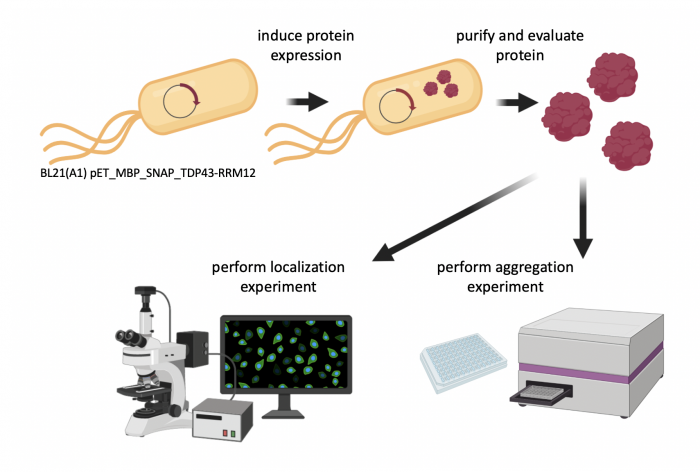20.109(S22):Module 1
Contents
Module 1: drug discovery
Small molecules, or ligands, are important research tools used to explore cellular processes and therapeutic targets. The use of high-throughput and unbiased strategies to identify small molecules that bind specific biomolecules, such as proteins, can provide insight on the structure or function of targets. Additionally, a small-molecule screen can identify new chemical probes for target proteins of interest.
The small-molecule microarray (SMM) is a high-throughput method that enables the detection of protein-ligand binding. Briefly, ligands are 'printed' onto a slide and incubated with purifed protein. Unbound protein is washed from the slide and bound protein is detected using a tag on the protein of interest. Because the location of every ligand on the slide is known, the detection of protein indicates that it is bound to the ligand at that location.
In your experiment you will build upon the SMM results gathered by researchers in the Koehler Laboratory to test ligands that bind to TDP43 using functional assays. TDP43 is an important target in that it has multiple roles in transcriptional repression, pre-mRNA splicing, and translational regulation. More specifically, TDP43 is an important player in nuerodegenerative diseases.
This module has been developed thanks to the generous time and thoughtful efforts of several Koehler Laboratory members, in particular Rob Wilson.
Research goal: Use functional assays to characterize ligands identified as binders to TDP43 from SMM technology.
Lab links: day by day
M1D1: Review small molecule microarray (SMM) technology
M1D2: Examine SMM data collected using TDP43 protein
M1D3: Induce and purify TDP43 protein
M1D4: Assess purity and concentration of purified TDP43 protein
M1D5: Perform aggregation assay using TDP43 protein and draft data slide for Research summary
M1D6: Learn best practices for mammalian cell culture and seed CAD cells for TDP43-localization experiment
M1D7: Complete staining for TDP43-localization assay
M1D8: Image TDP43-localization experiment and complete data analysis
Major assignments
References
- A method for the covalent capture and screening of diverse small molecules in a microarray format. Nature Protocols. 1:2344-2352.
- Recent discoveries and applications involving small-molecule microarrays. Chemical Biology. 18:21-28.
- The cellular thermal shift assay for evaluating drug target interactions in cells. Nature Protocols. 9:2100-2122.

